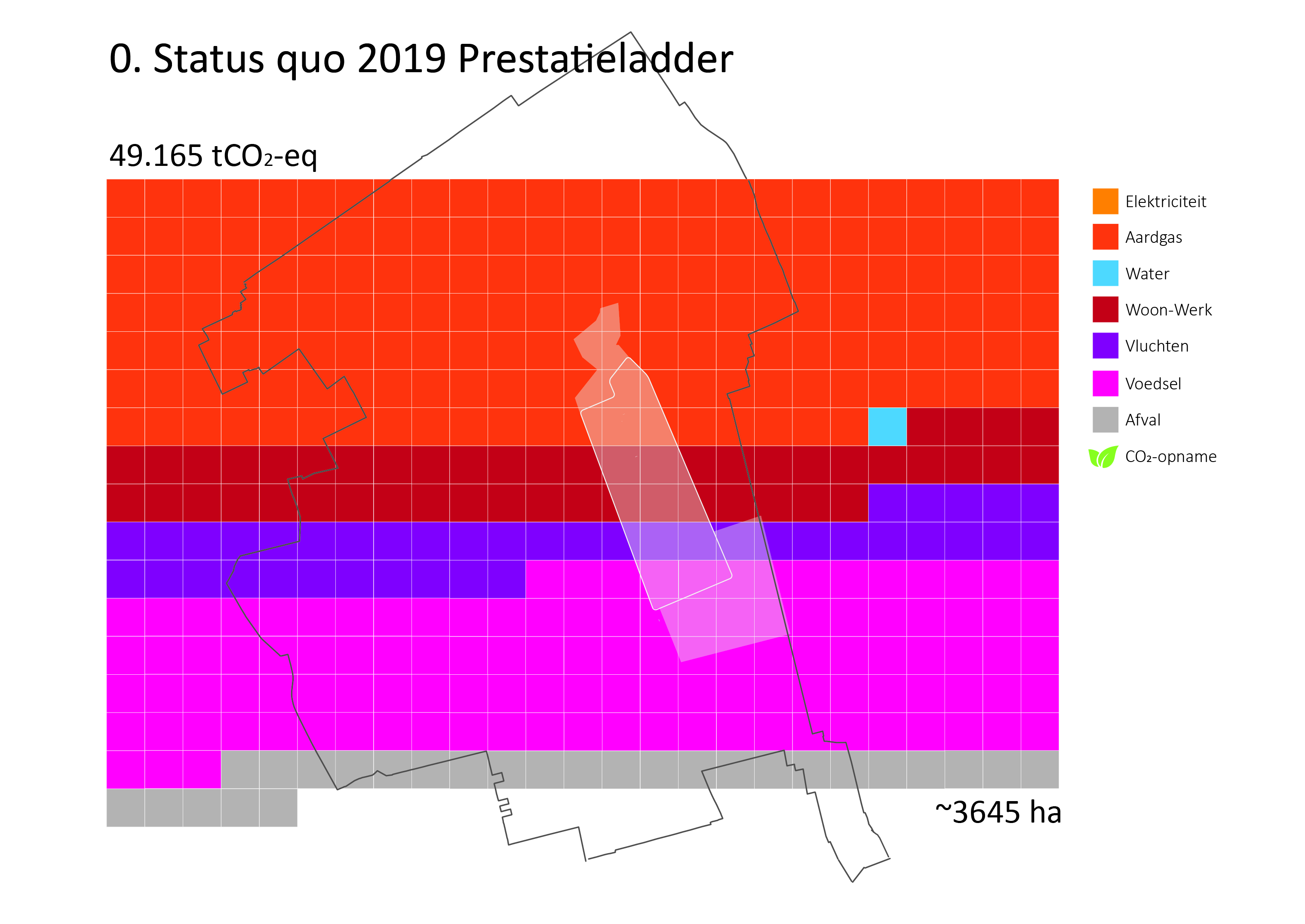TU Delft maps own CO2 emissions in detail
As a climate university, TU Delft aims to be carbon neutral and circular by 2030. Information regarding CO2 emissions on campus is essential to realising this ambition. Emissions associated with all university activities have already been mapped for 2017 and 2018, and the CO2 performance ladder methodology has now been used to map emissions in 2019. From now on, TU Delft will make this carbon sum annually, and reduce its emissions based on the results.
Footprint
The below diagram shows TU Delft’s carbon footprint for 2019. Total emissions are 49,165 tonnes of CO2 equivalents. With 5,607 FTEs of staff and 25,407 students in 2019, this equates to 1.59 tonnes of CO2 equivalents per FTE. In this calculation, we work with the assumption of 1 FTE per student.
Compensation
The emission of CO2 equivalents is also graphically represented as the forest cover required to offset the emissions. This is shown in the diagram below, with the Municipality of Delft territory (grey line) and the TU Delft campus (white line) in the background.
At the time of the CO2 analysis of TU Delft, in 2019, there was no proper insight into the climate effects of procurement (of furniture, equipment, materials and products etc.). In the year 2021, Herth and Blok finished their study of the carbon impact of procurement, which made clear that it was equal to everything already charted in the graph above. Therefore, the eventual relative contribution of energy, food and mobility in the total carbon emissions turned out to be around 15% each.
Methodology
The footprint was determined using the CO2 performance ladder methodology. The volumes of total greenhouse gas emissions have been converted into CO2 emissions with the 2019 emission factors outlined on the website www.co2emissiefactoren.nl. This methodology facilitates a consistent comparison of CO2 emissions over the years. It also makes it possible to compare TU Delft emissions with those of other companies.
Sustainability in Delft
This is the first time that TU Delft has used the CO2 performance ladder to determine its footprint. The carbon footprint for 2019 is therefore a baseline measurement (the 2020 overview will be published in May), and ‘new’ insights will be possible from this year onwards. Climate action will be taken based on these insights.
TU Delft currently has four priorities when it comes to sustainability: Carbon-neutral campus (with regard to carbon neutrality, the university focuses on reducing CO2 emissions wherever possible; the remaining emissions are offset), Circular campus, Healthy campus, and Biodiversity and Ecology. For the first priority, a CO2 Road Map was drafted in 2019 by Andy van den Dobbelsteen, in collaboration with Tess Blom. This year, Van den Dobbelsteen was appointed as the TU Delft Sustainability Coordinator, responsible for developing a sustainability vision and programme for the campus. He will also focus on driving forward work on each stated priority
More information
Report: download here
See the TU Delft vision on Climate Action: https://www.tudelft.nl/2019/tu-delft/tu-delft-publiceert-visie-op-climate-action
An overview of sustainability initiatives on TU Delft campus can be found on: https://www.tudelft.nl/sustainability/
Contact:
sustainability@tudelft.nl
Andy van den Dobbelsteen: https://www.tudelft.nl/en/architecture-and-the-built-environment/about-the-faculty/professors/profdrir-aajf-van-den-dobbelsteen
Science Information Officer: TU Delft Roy Meijer, r.e.t.meijer@tudelft.nl, +31 6-140 15 008

